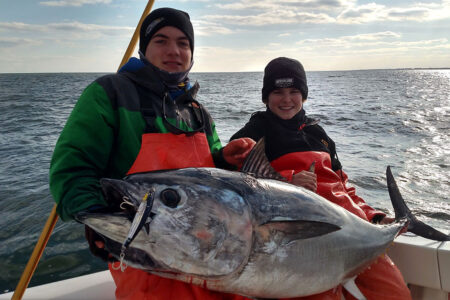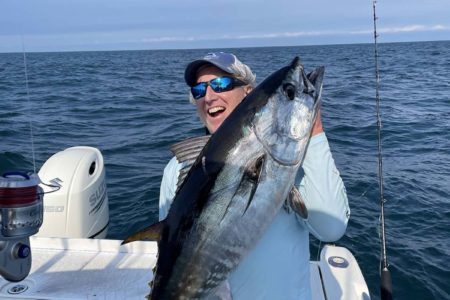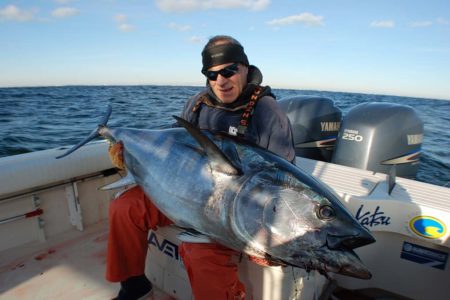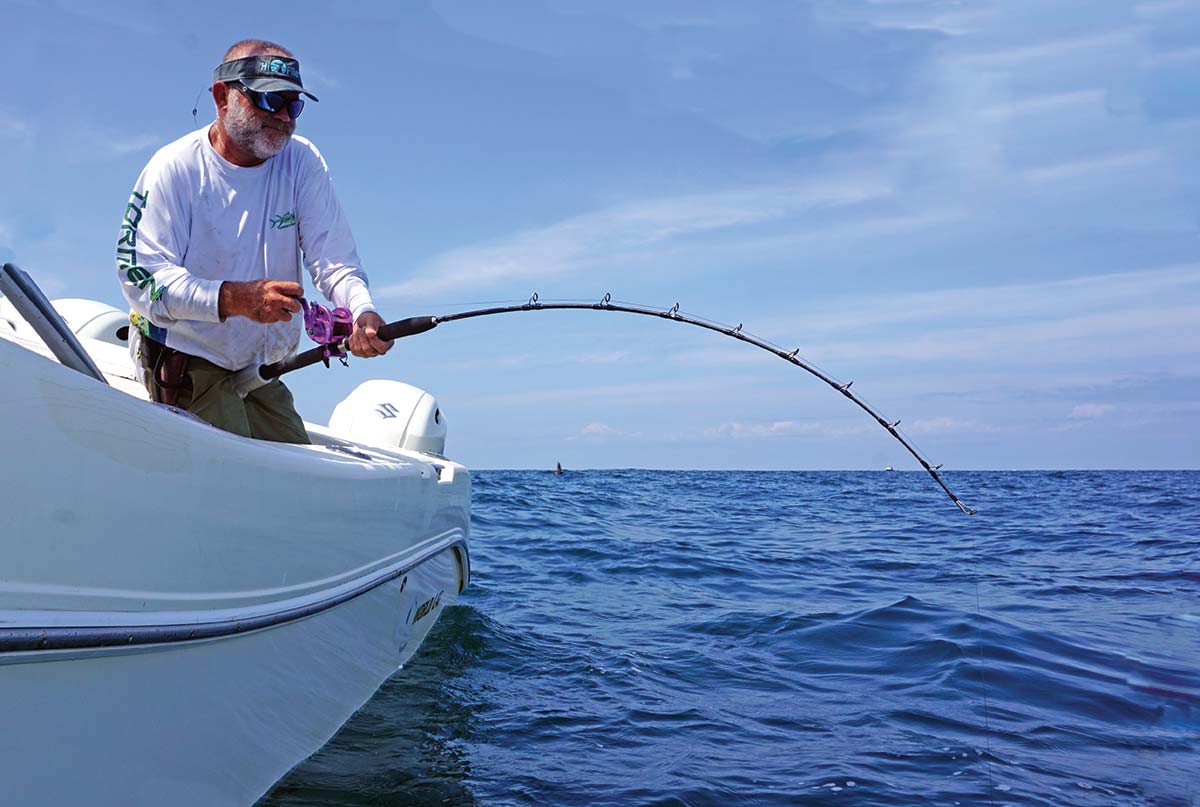
As a captain who has fished intensely on the eastern seaboard for all of the inshore species, I’ve always enjoyed opportunities to fish for tuna. Whether as a guest on a canyon run, trailering to Florida where the edge is close, or chartering a vessel in the tropics, these outings have supplied me with a nice change of pace from my inshore targets.
So when the nearshore, schoolie bluefin bite materializes within reasonable range – primarily between 15 and 40 miles offshore depending on your port of call – I readily take advantage of the windows of opportunity to turn my small vessel into a mini, tuna battlewagon.
The inshore run is nothing new. It has been chronicled over the years; however, its viability seems to be trending upward in recent summer campaigns according to charter and recreational captains on the scene daily. Bluefin tuna averaging 10 to 50 pounds are common with specimens approaching 100 pounds getting landed time to time. As this fishery continues to thrive, more and more small boat anglers are gearing up to include these outings in their plans when the weather and seas break right.
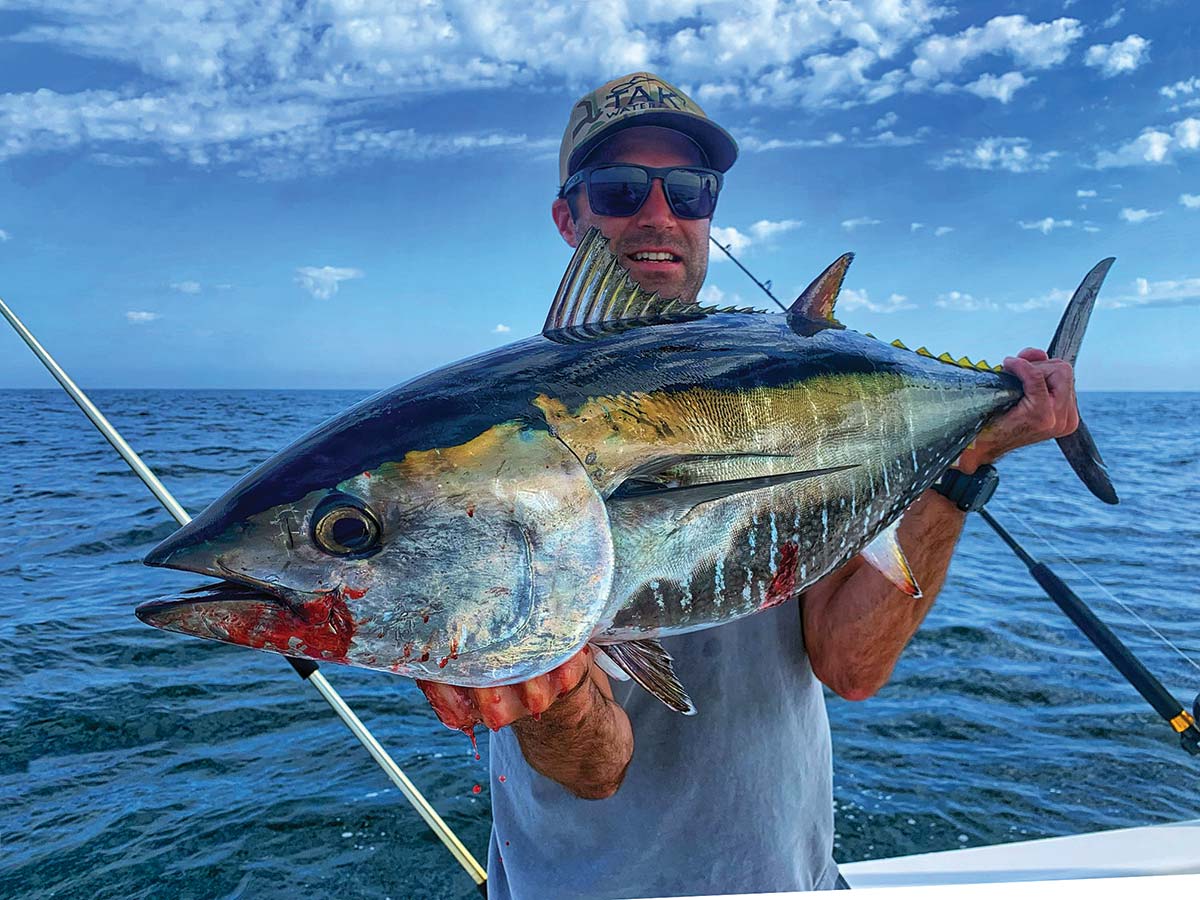
How Small Is Small?
For the purposes of this feature, I’m considering a small boat to be that of 20 to 23 feet, give or take. Understanding boats and how they perform in conditions is pivotal before venturing off. A boat with 24.5-degree deadrise, or a “V” approaching that, can cut the chop when there is a lump on the ocean. Another factor to consider is the vessel weight. Lighter boats can pound more than heavier ones since they ride on top of the sea more. The number one consideration is, Can you get home safely when seas build unexpectedly with white on top? If this answer is a “no” or “maybe,” then fishing those extra miles from shore is probably not a good idea.
Since many small boats run economically and with a single screw, a respectable-sized fuel tank should be more than enough for a trip out to the mid-shore grounds or perhaps a little further. My 21 Contender holds 90 gallons and runs off a single 200-horsepower four-stroke. I always have a substantial surplus after an inshore tuna trip. Anglers in small boats can use their fluke and striped bass trips to help calibrate what kind of range they obtain from each tank of fuel.
Radar is highly recommended for boats going offshore, but it’s no replacement for a captain’s safety instincts and staying alert. Radar will not detect items floating just below the surface that can tear a hole in the boat. One must keep their wits about them at all times. For captains lacking radar – and I’ve been one of them many times – tuna trips are still possible. Staging at the mouth of the inlet waiting for just enough light to run has always been the game plan in those situations. It’s not ideal, but if the bite is close enough and seas are calm, one can be on the fishing grounds in reasonable time.
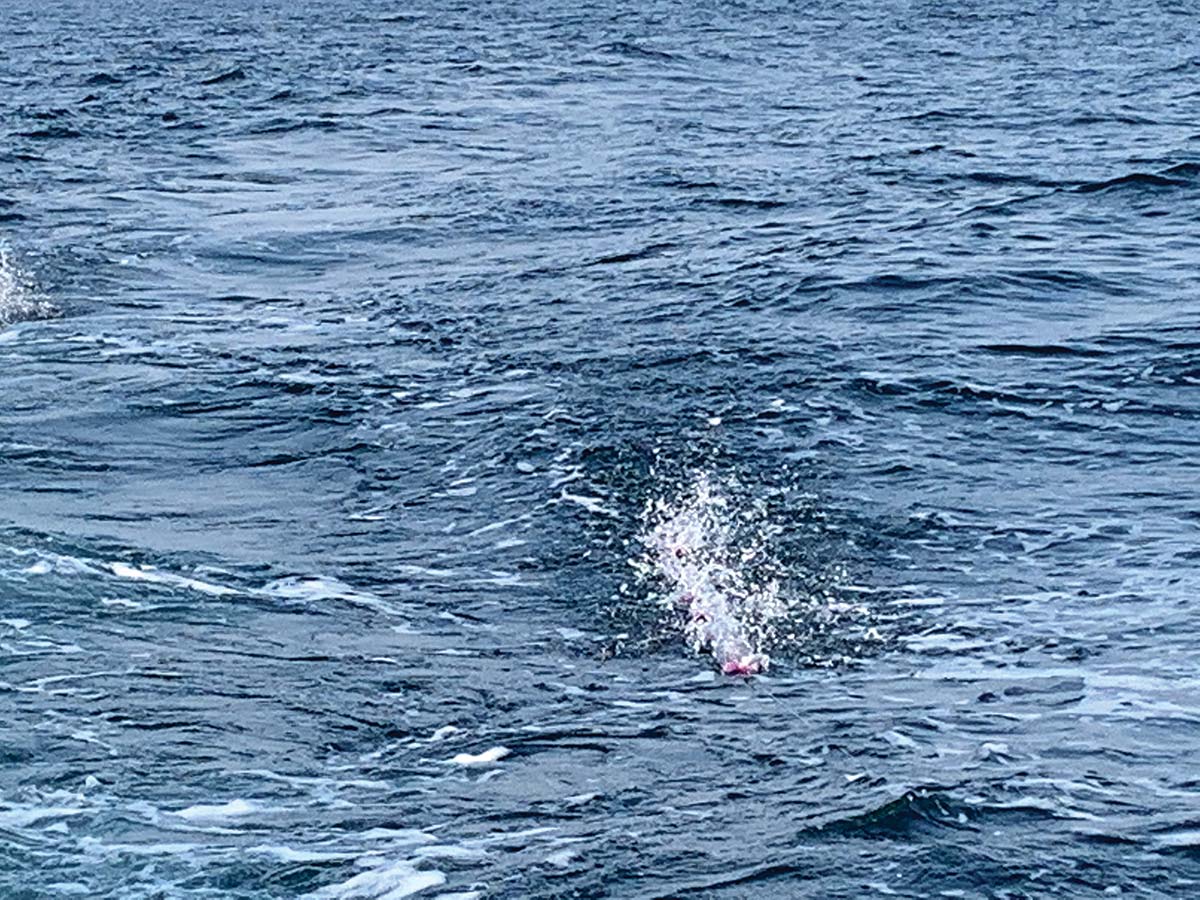
Buddy boat systems are a fantastic way to enhance safety. Staying in touch and near one another is a notch up from going alone. However, with the popularity of the inshore tuna gaining ground each season, the amount of boats heading off in the wee hours of the morning are going up. Sometimes there are hundreds of boats on the scene as the sun breaks the horizon! While not the best for fishing, this is an outstanding layer of safety for small boat tuna anglers. Fleets are nice to have around should a something catastrophic take place.
A back-up, hand-help GPS and VHF radio are terrific tools to keep onboard as redundancy is key in the safety game. I keep my Garmin Inreach handy, which has an emergency feature and texting ability offshore, in my pocket while running. In the event I were to go overboard, I have the tool on my person opposed to in the vessel where it is of no use.
It’s best to be on the tuna grounds before the light starts to emerge or certainly as close to that as possible. Often tuna feed along lumps, edges or wrecks that are holding dense schools of forage. The bait is capable of holding fish for a day, weeks or even months, though lulls occur between mega bites. The only way to truly know is to go! Bites can fire off anytime in the day, but if captains want to play the percentages, dawn is the ticket. In addition, sea breezes often kick up around lunchtime so wise captains consider heading for port before it gets bumpy. The ride home is a sizeable factor for small boat tuna skippers. The hotter the day predicted, the gustier the sea breezes will become when the sun gets high in the sky.
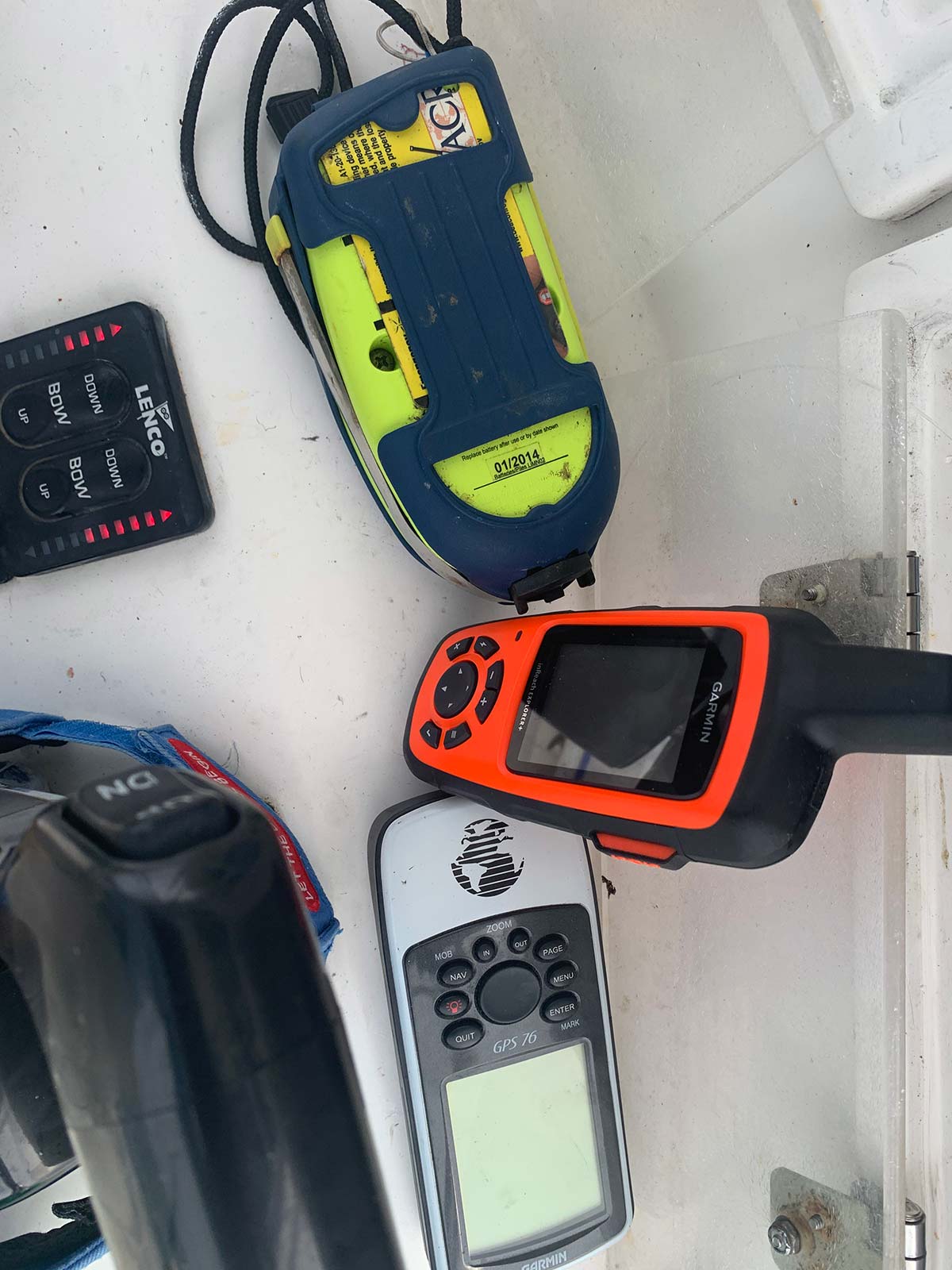
Lines In, Baits Down
Before sending lines, whether jig, pop, troll or chunk, it’s best to decide if the area is worthy of deployment. Tuna that show up on the sounder as individuals, small clusters or large schools help make the decision easy to deploy. If the fishfinder lacks actual tuna marks, locating plumes of bait is the next best thing. Sand eels, squid, sardines and other small fish can be noted on the bottom machine and are a key component to finding hungry tuna. When tuna and bait are holding on structure, the jigging boats will congregate heavily over the feature while troll vessels work the periphery.
If jigging and popping is the tactic, dense quality signs of life are even more desired. To randomly start jigging or firing off casts without good indicators is a tough endeavor that often produces substandard results. Experienced anglers with good tuna instincts will slowly ride around the wrecks, humps or ocean life itself, searching for the precise reason to let ‘em fly. In the absence of quality fish marks on the sounder, skippers should look for whales, dolphins, turtles, giant sunfish, tuna chicks or any other species of birds on top of the water.
When, in fact, marks do present on the sounder, jigs should be sent to the water column where the life is displayed. If marks are scattered, work jigs on the bottom, mid-column and upper-column in effort to find fish. It’s important to carry jigs in a wide range of weights from very light to heavy and everything in between so that adjustments can be made; 40-gram jigs (1.4 ounces) to 250 grams (8.8 ounces) are good to have at the ready.
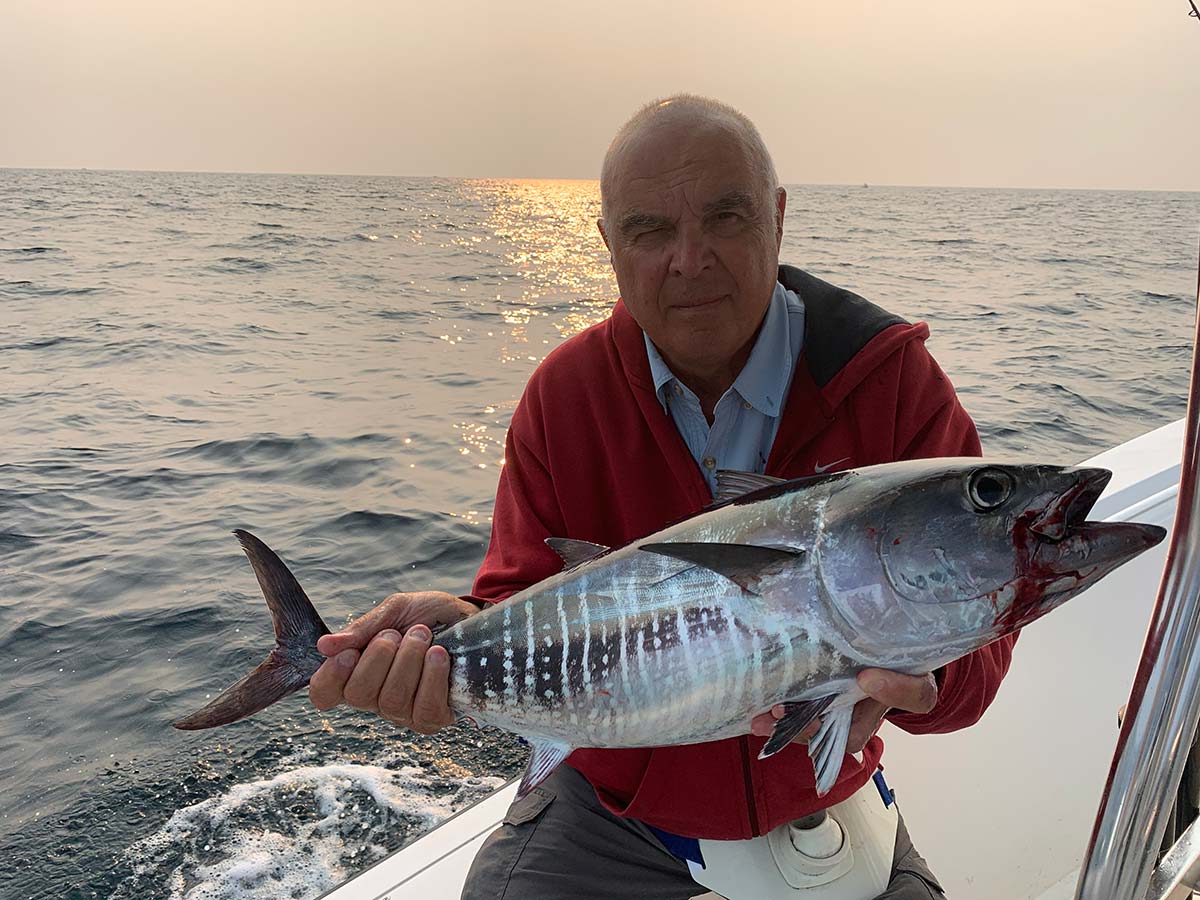
Also carry an assortment of colors because there’s nothing worse than hearing a friend on the next boat over is crushing them on the color you didn’t bring! Jigs by Nomad Design, Ocean Tackle International, Flat-fall, Sea Falcon and Williamson all work well. Soft plastics resembling sand eels by Ron Z and Hogy are musts on the boat. They can be cast or jigged and have proven themselves effective.
Snap-jigging, butterfly jigging and slow-pitch jigging are all effective methods of catching tuna. A 6-foot PENN Carnage Rod paired with PENN Torque 6500 is capable of supplying anglers with a lightweight, but powerful combo for school-sized tuna and the occasional beastly tuna that tests the tackle. For small boat captains on a tighter budget, a PENN Slammer 6500 spinning reel will handle the job for smaller bluefin, with 50-pound braid and a shot of Berkley Vanish 60-pound fluorocarbon.
Popping might be the most desired way to catch a tuna. Captains that spot tuna chasing, exploding on or launching out of the water should carefully motor in front of the action without disturbing the frenzy. There, they can cast toward the tuna that hopefully get within casting distance. This sometimes is a frustrating process; however, when it works out, the result is ranked as one of the best ways to catch a fish in the hobby. Casting presentations near whales, dolphins and any other life can also result in hook-ups even if tuna aren’t physically seen.
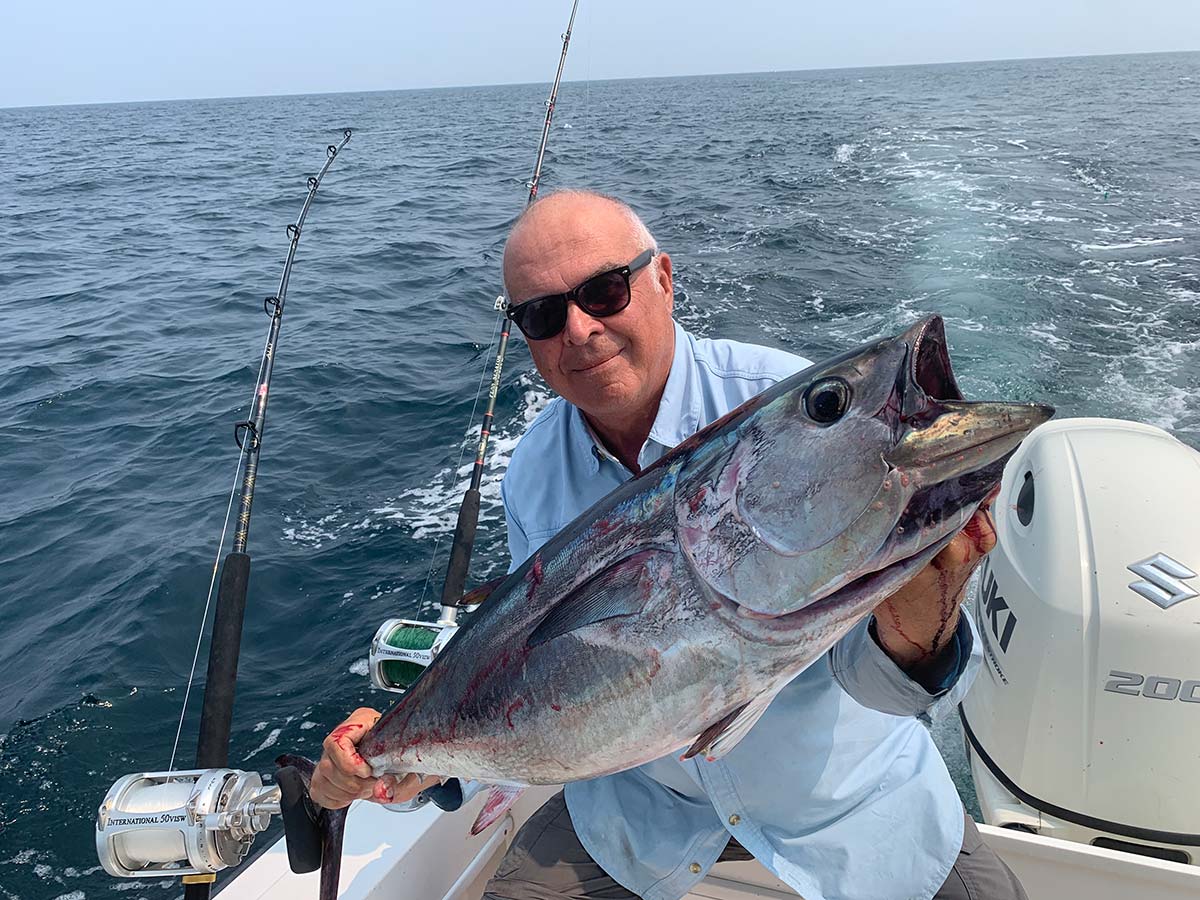
Bluefin On The Troll
Covering lots of water has to be the number one advantage for trolling captains. Add the surface explosions on the lures and the sound of the drag blistering off the reel, and what you have is another intoxicating method to catch. Steadily cruising at 4.5 to 5.5 miles per hour with a full spread opens all kinds of doors. Skippers can try slow, fast or “goose” the speed faster from a consistent velocity to invoke a strike. Pulling tackle over humps, wrecks and ledges from every direction can produce bites even when the aforementioned forms of life are limited. Trolling away from popular, destination spots when a bite fizzles can aid in finding schools of tuna that aren’t been pressured heavily. Additionally, captains should keep an eye out for rips and temperature breaks as they zigzag around their chosen waters.
For small boat anglers, Sterling Tackle’s innovative Wide Trackers have been monumental getting anglers hooked up with tuna. Their implementation could be compared to that of when mojos, once used primarily used in Virginia and Maryland for striped bass, hit the Northeast striper scene. The Tracker Bars, which are another name for Wide Trackers, help inexperienced and expert tuna captains alike catch quickly and with less preparation than ever before since buying and rigging bait is not a requirement. Anglers that need to rapidly convert their efforts from say, summer flounder to tuna due to a weather window, can do so extremely fast when employing the Sterling Wide Trackers and Chaos Bars as their primary lures.
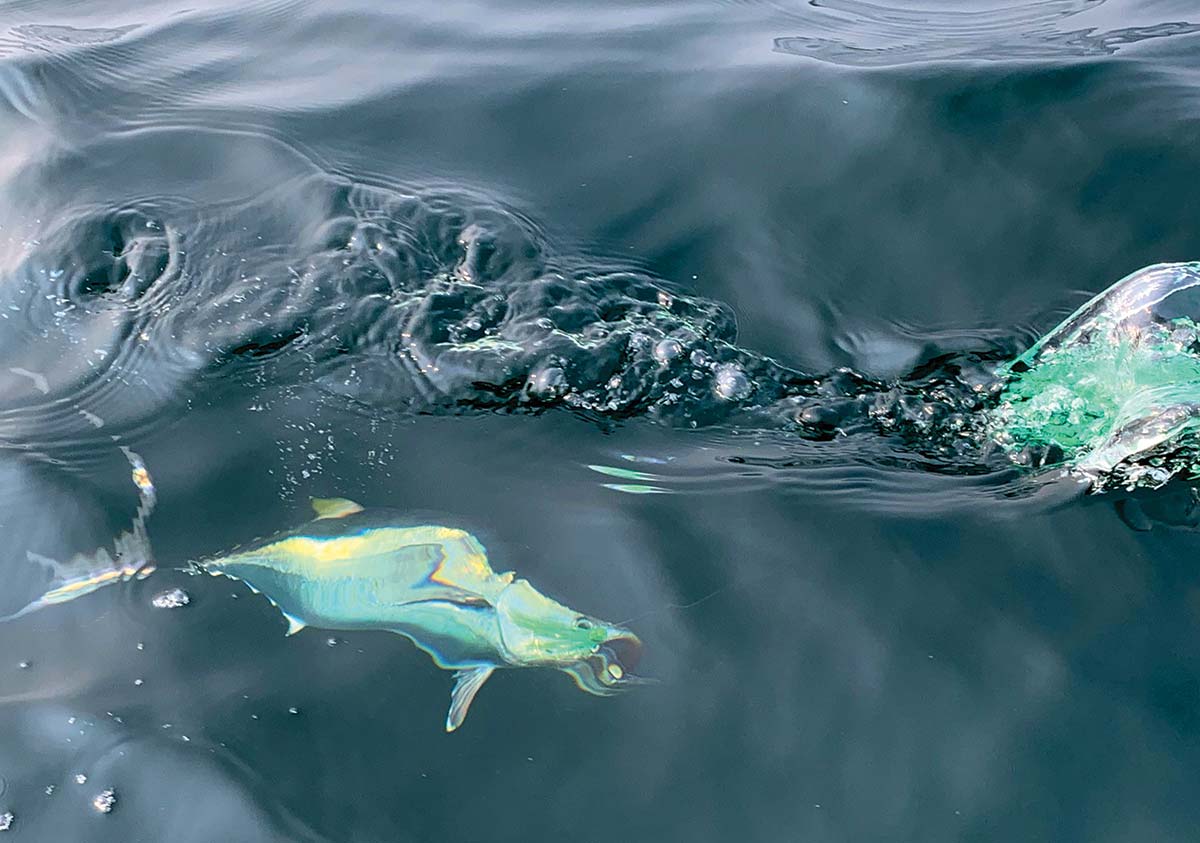
Most small vessels are narrow in nature and don’t contain outriggers. The Wide Trackers have an angled keel that pushes the spreader bar significantly outside the wake to the port or starboard of the boat. This is of superior importance because now captains can almost double the amount of lines they troll. The bars also drag in clean water away from the wash which is increases hook-up rates dramatically. I often run two sets of Wide Trackers – one 36 inches and one 18 inches; closer to the boat, I’ll run a couple of Sterling Crazy 8 chains off the flat line clips and finally a heavy Joe Shute with a ballyhoo or soft plastic down the middle. Cedar plugs are time-tested option in the prop wash as well. Sterling Tackle’s Chaos Bars function in the same fashion as Wide Trackers, but make even more tuna-attracting surface commotion on the surface. Therefore, otherwise reluctant bluefin may rise to inspect and attack the presentation.
| NEED TO KNOW |
| Small tuna skippers must have a cooler large enough to hold plenty of ice and the day’s catch. Whether as part of the boat, a carry-on-variety or a tuna bag, there has to be a way to keep the fish on ice. Keep in mind that the inshore tuna grounds may be equivalent to the canyons if you’re a small boater, but they are very much in range for enterprising anglers that stay ready for weather windows. It’s important for fishermen to purchase the required tuna permit ahead of time so it’s not forgotten. Go to hmspermits.noaa.gov for the required Highly Migratory Species (HMS) permits, and remember to keep your daily catch reports. |
Effective colors can range from day to day, but the purple/black and zucchini colors have been supremely effective in recent years and are a must in any spread. Altering the color of the stinger from that of the rest of the bar makes the trailing stinger bait with the hook stand out more. For example, a purple/black spreader bar with a green stinger is highly productive. When it comes to squid or machine-based spreader bars, each successful skipper has their own favorites. That’s why it’s imperative to have both on board. If one presentation is getting more strikes than the other, then by all means the switch should be made.
The inshore troll can be accomplished with lightweight PENN Squall two-speed, to PENN International 30 wide reels, and even PENN 50 wide set-ups. Within a tighter budget, PENN Senators will work fine. It’s all about having a quality drag system and ample line capacity. If only one quiver of rods and reels can be purchased, I’m of the opinion that slightly oversized tackle is the way to go. In the event the tackle has work for larger fish or other species down the road, the investment has a better width in purpose. Remember, even though an outing might be dominated by school bluefin, a larger model can show up when least expected.
Chunk ‘Em Up
The inshore chunk gains steam on the inshore tuna grounds later in the summer. It is proven to be extremely effective. A downside of length-challenged vessels is that they often lack a surplus of storage. Some captains will have to use their trolling or jigging set-ups for chunking, and while that tackle might not be entirely ideal for the change in tactics, they will still fulfill the task. Let’s face it, most captains who own small vessels are fishing tuna in addition to their primary targets. Thus, owning the most immense, tuna tackle collection might not be reality.
Captains are best to seek out fresh butterfish, sardines, squid and spearing to slowly slice in pieces and pitch over the side. Menhaden oil or peanut bunker themselves can be used with some level of effectiveness, but often they draw sharks which is exactly what tuna-driven captains want to avoid. Continuous chunking without creating a gap is essential so that fish enter the zone where the hooked baits are. It’s important not to chunk too much or too little, but just the right amount.
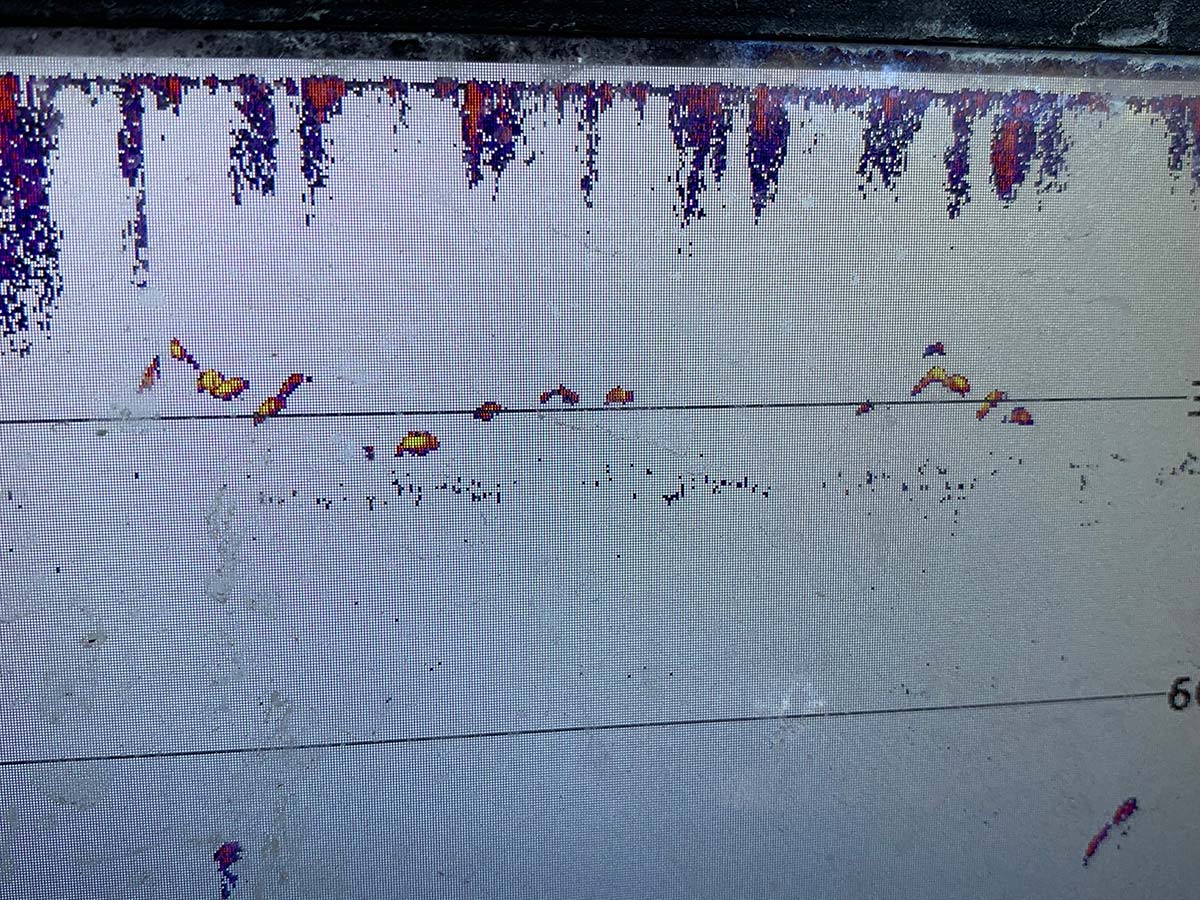
Flourocarbon leader from 60- to 80-pound test should work for hungry bluefin or inshore yellowfin, but if tuna are feeding in the slick with no bites taking place, then leader line should be decreased until strikes occur. Circle hooks from 6/0 to 8/0 hooks will work best when drifted back. It’s all about making the hooked bait look as natural as possible so it gets bit.
Depending upon your port of call, the school bluefin bite can begin to show itself at the beginning of spring and could last well until Christmas. But as spring morphs into summer, get ready because some of the best fishing days with equally nice weather will descend upon coastal waters.

